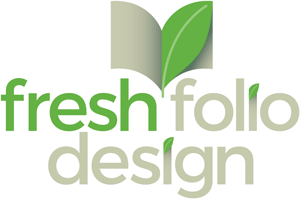When you are starting a business there are countless decisions to be made, including, who is your target market, what are your values and priorities, and what kind of triangle are you?
Wait… what?
All projects and products are comprised of the variables; price, speed and quality, and any increase in two of those variables requires a reduction in the third. The “Unattainable Triangle” is the maxim that high quality products delivered in a quick and efficient way will always have a higher price.
So, let’s take a closer look at this mysterious geometric conundrum.
What Makes It Unattainable?
The reason the Unattainable Triangle is considered unattainable is that, for a project with a defined scope, it’s not feasible to have lower price, faster service and retain high quality. Something in that equation needs to give for a company to survive.
A perfect example of how this works in the real world is McDonald’s (or White Castle, if you REALLY want to punish your digestive system). McDonald’s has made their name on providing low cost food quickly. However, in doing that the quality of their product is lower. Zagat doesn’t even acknowledge that McDonald’s exists…ouch. While you can see examples of McDonalds trying to change the perception of their quality, it will never alter the narrative that people go there for cheap, fast food. Something always has to give.
There are a few different ways this can look. For example:
- A product of high quality, created quickly will carry a higher price.
- A low price product created quickly will result in a lower quality product.
- A high quality product may decrease price for a longer production time.
Why Can’t We Have It All?
The problem with trying to deliver on all three sides of the triangle is that it’s not logistically possible. If a high-quality product suddenly started selling for half its price, questions would quickly be raised about what was compromised to allow that to happen. If a Lamborghini Huracan (that’s a real thing, right?) started selling for $50K instead of $200K, you would understandably think that quality was compromised. Either that, or Lamborghini is going out of business very quickly.
Similarly if the speed a company is able to manufacture a product is dramatically shortened, it’s safe to assume there were greater resources in staffing or equipment occurring, which would increase production costs and price.
Now, any search of the internet will uncover examples of companies claiming to provide all three, but those usually are cases of very subjective claims of quality or price. The other thing that is usually behind these types of claims are reductions in the scope of a project.
The reason it’s referred to as the Unattainable Triangle is because it is just that. If a company has a great, high quality product, then why would they undersell it. There is good reason that high quality is associated with higher price. Perception matters.
Examples and Strategies
Look around and you can see countless examples of these factors at play.
- Starbucks — High quality, fast turnaround, high price
- Fed-ex — High quality, fast turnaround, high price
- USPS — High quality, slow speed, low price
- McDonalds — Low quality, fast turnaround, low price
As a business you want to be clear about which of those factors you focus on. Our company usually works in the variables of Quality and Speed. We provide high quality design in a timely manner. There are definitely designers who are cheaper, but won’t bring the same level of experience to a project.
It’s OK to flex within the factors of Quality, Speed and Price, but know what your primary focus is.
Another way we see this concept in action is in the case of rush jobs. Clients contacting a designer at the 11th-hour to come through on a project requires effort above-and-beyond the normal situation. That “save the day” scenario defines the desire for quality design, with a quick turnaround, therefore the third leg is impacted resulting in an increased cost.
When you start a project have an understanding of what your priority is and know that once you define 2 of the legs, the 3rd is where you will need to be flexible.
Closing the Triangle
What about you? Where do you see these elements at play in your business or your employer’s business? What examples do you see around you in your day-to-day life? Have you ever seen examples where you think all three factors are successfully given high priority? If so, how do you think the company is managing it? Do you think they can sustain this long-term?
Let us know your thoughts about this. We always welcome discussion.




Leave a Reply